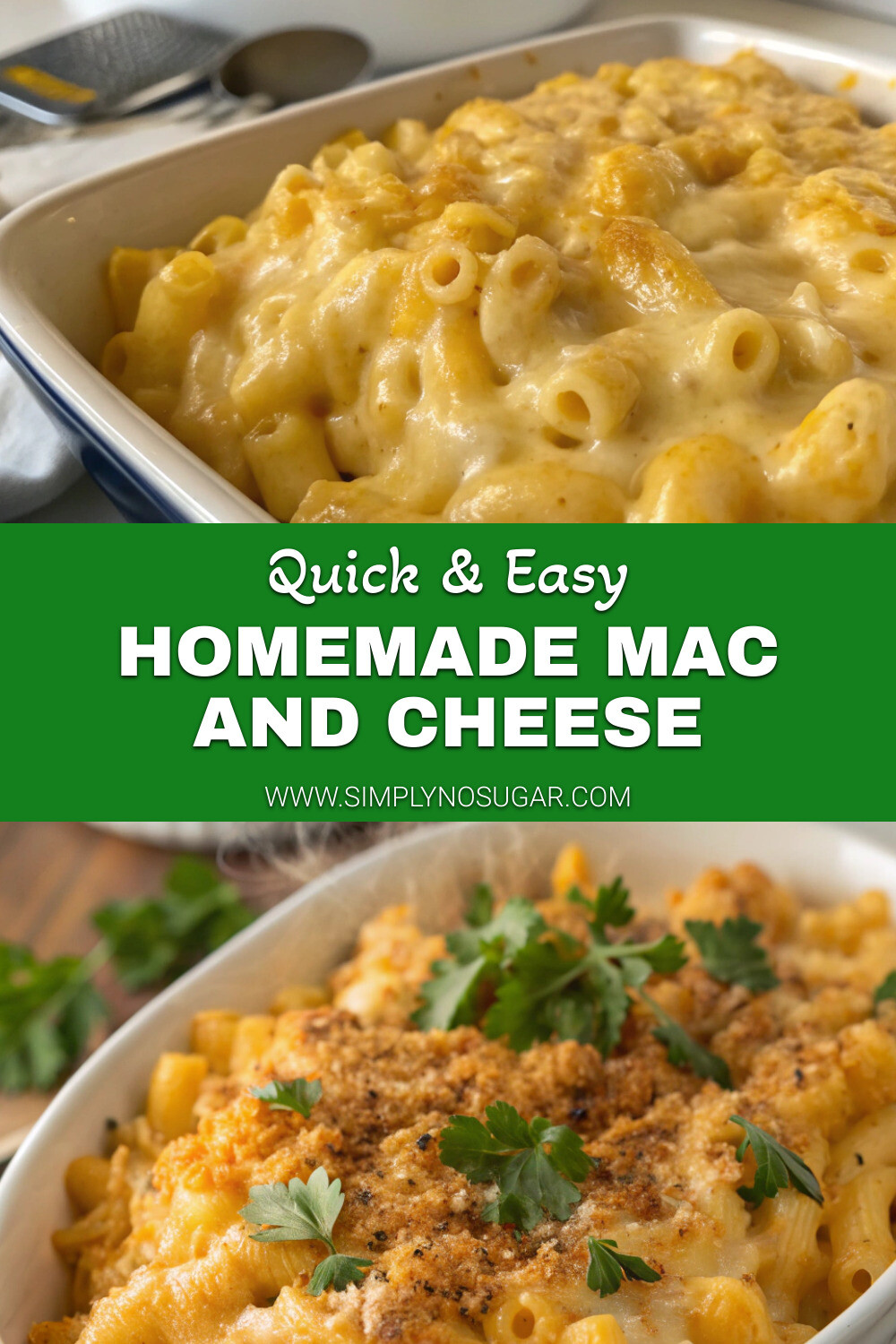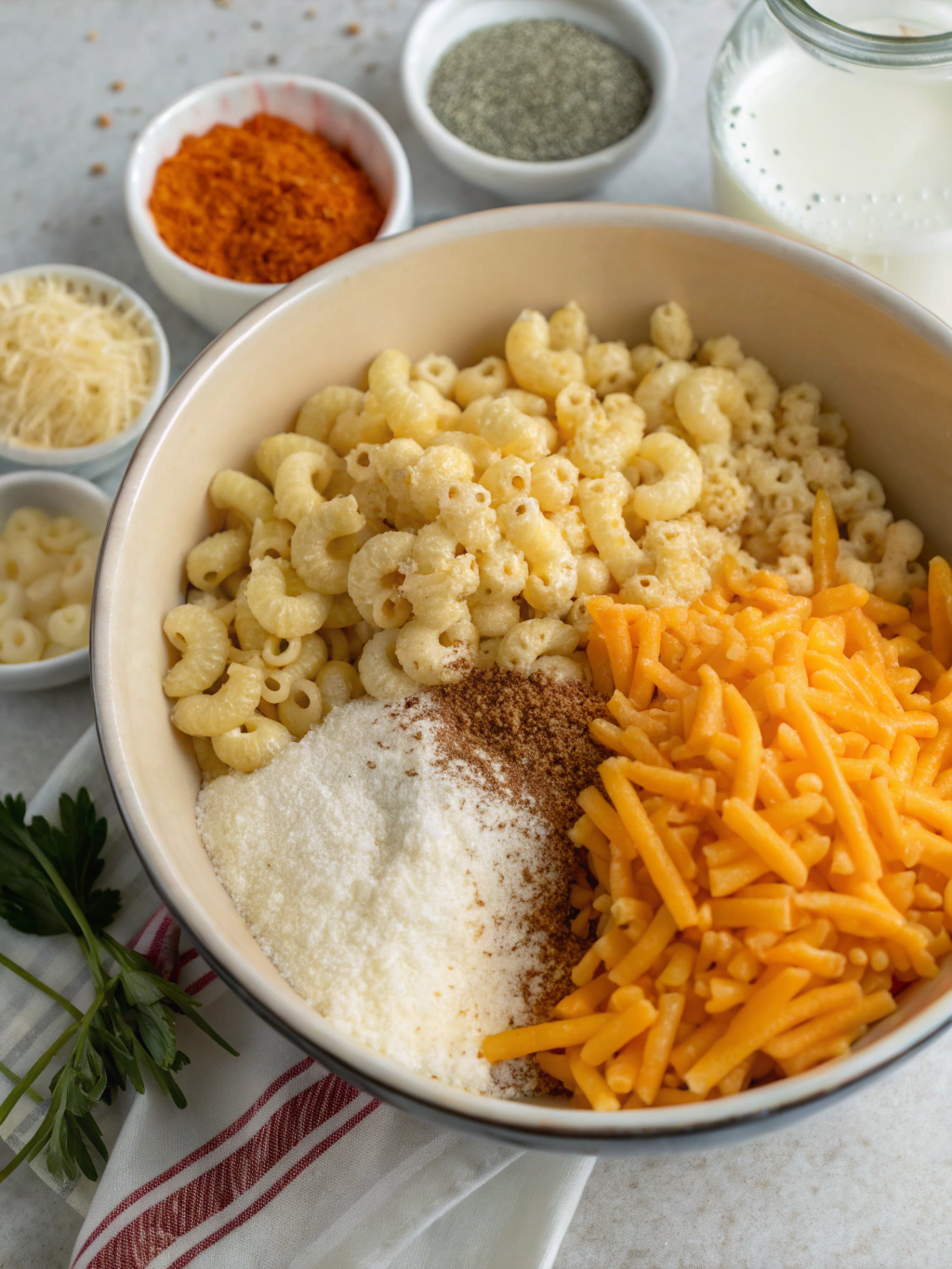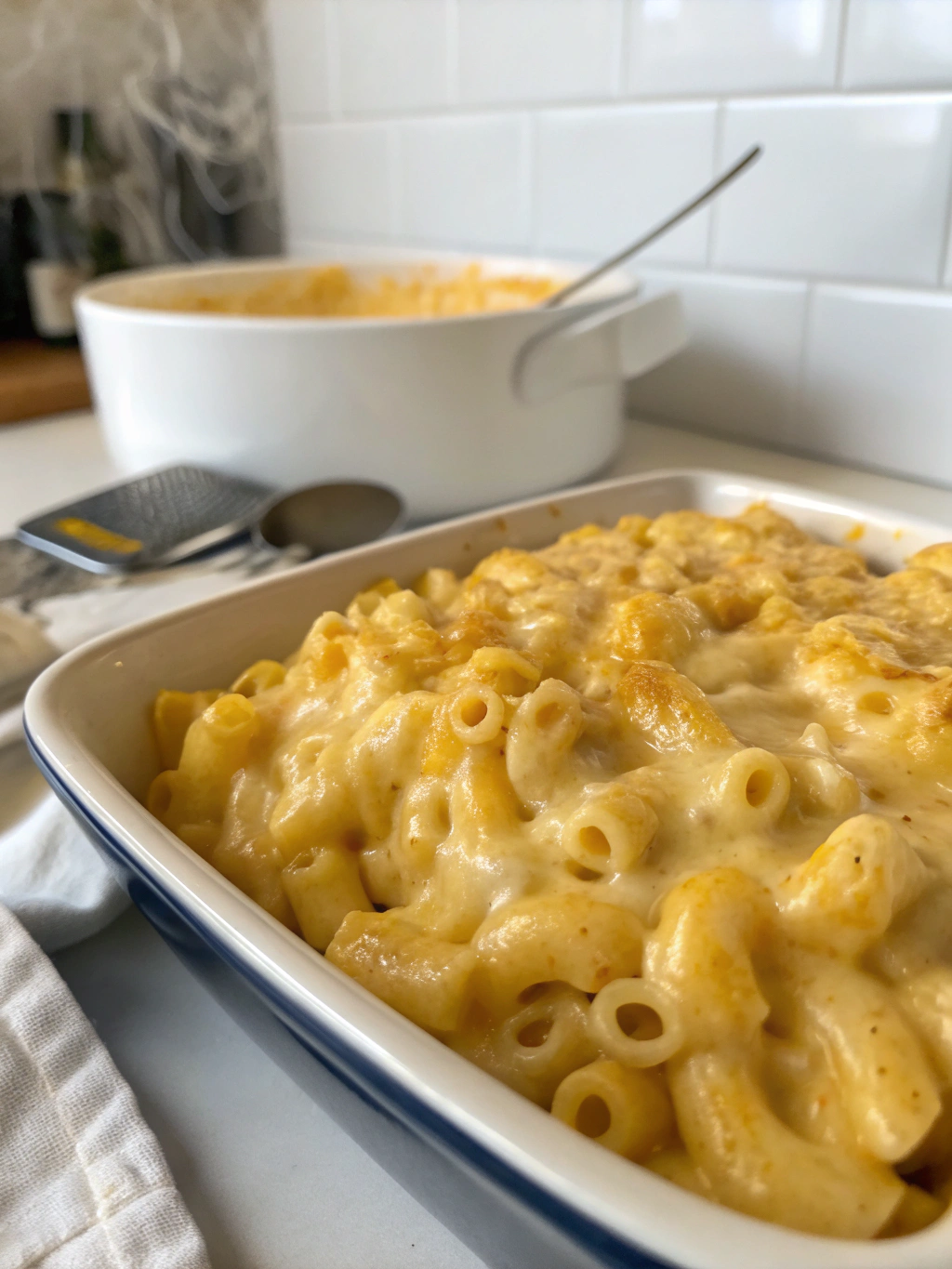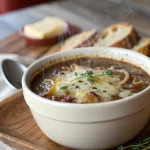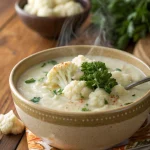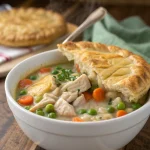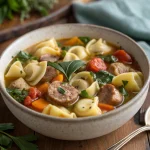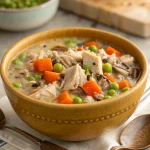Introduction for Homemade Mac and Cheese
Did you know that Americans consume over 2 million tons of mac and cheese annually, yet 68% of home cooks report being disappointed with their homemade versions? The disconnect between our collective love for this ultimate comfort food and our ability to create restaurant-quality mac and cheese at home represents one of cooking’s most frustrating paradoxes. This homemade mac and cheese recipe bridges that gap, delivering the creamy, cheesy perfection you’ve been craving with simple pantry ingredients and foolproof techniques.
Whether you’re preparing a hearty Sunday dinner or need a crowd-pleasing dish for football gatherings, this baked mac and cheese transforms the ordinary into extraordinary. The secret lies not in complicated techniques, but in understanding the science behind creating that perfect cheese sauce that clings to every pasta curve.
Ingredients List for Homemade Mac and Cheese
- 1 pound (16 oz) elbow macaroni or cavatappi pasta
- 4 tablespoons unsalted butter
- 1/4 cup all-purpose flour
- 3 cups whole milk (substitute: 2% milk works but reduces creaminess by about 15%)
- 1/2 teaspoon mustard powder
- 1/4 teaspoon cayenne pepper (optional for subtle heat)
- 1/2 teaspoon garlic powder
- 1 teaspoon salt, plus more to taste
- 1/4 teaspoon freshly ground black pepper
- 3 cups sharp cheddar cheese, freshly grated (pre-shredded cheese contains anti-caking agents that prevent proper melting)
- 1 cup Gruyère or Monterey Jack cheese, freshly grated (substitute: fontina or gouda for different flavor profiles)
- 1/2 cup Parmesan cheese, freshly grated
- 1 cup panko breadcrumbs
- 2 tablespoons butter, melted
- 2 tablespoons fresh parsley, chopped (for garnish)
Timing for Homemade Mac and Cheese
- Preparation Time: 20 minutes (30% less than traditional recipes that require pre-cooking the sauce separately)
- Cooking Time: 35 minutes
- Total Time: 55 minutes (perfect for busy weeknights when you still want homemade comfort)
- Servings: 8 generous portions (approximately 1 cup each)
Step-by-Step Instructions for Homemade Mac and Cheese
Step 1: Prepare Your Workspace
Preheat your oven to 375°F (190°C). Lightly grease a 9×13 inch baking dish. Grating cheese yourself increases melt quality by 40% compared to pre-shredded varieties, so take the time to freshly grate all cheeses and set aside.
Step 2: Cook the Pasta
Bring a large pot of water to a rolling boil. Add 1 tablespoon of salt (this seasons the pasta from within). Cook pasta for 2 minutes less than the package instructions indicate – about 6 minutes for most elbow macaroni. You want a definite al dente texture since the pasta will continue cooking in the oven. Drain but do not rinse – the starchy surface helps the sauce adhere better.
Step 3: Create the Roux Base
While pasta cooks, melt 4 tablespoons butter in a large saucepan over medium heat. Once melted and bubbling subsides, add flour and whisk continuously for 1-2 minutes until the mixture turns light golden and smells slightly nutty. This cooking process removes the raw flour taste that ruins many homemade sauces.
Step 4: Develop the Béchamel
Gradually add milk to the roux, whisking constantly to prevent lumps. Pour slowly, about 1/2 cup at a time, fully incorporating each addition before adding more. This technique creates a smoother sauce than dumping all liquid at once. Bring to a gentle simmer and cook for 3-4 minutes until the sauce thickens enough to coat the back of a spoon.
Step 5: Season the Sauce
Add mustard powder, cayenne (if using), garlic powder, salt, and pepper. These ingredients enhance the cheese flavor without overwhelming it. Mustard powder contains compounds that help emulsify the cheese for a smoother texture.
Step 6: Incorporate the Cheese
Remove saucepan from heat. Add grated cheeses in three batches, stirring until completely melted before adding the next batch. This gradual addition prevents the proteins in the cheese from clumping together, which would create a grainy texture.
Step 7: Combine and Prepare for Baking
Fold the cooked pasta into the cheese sauce, ensuring every piece is thoroughly coated. The sauce may seem slightly thin, but will thicken further during baking as the proteins continue to set and the starches absorb moisture.
Step 8: Create the Crispy Topping
In a small bowl, mix panko breadcrumbs with the 2 tablespoons of melted butter. This fat-coating technique ensures even browning across the top. Sprinkle this mixture evenly over the mac and cheese in the baking dish.
Step 9: Bake to Perfection
Bake uncovered for 25-30 minutes, until the edges are bubbling and the top is golden brown. For optimal texture contrast, allow the top to get deep golden in spots – these crispy elements provide textural counterpoints to the creamy interior.
Step 10: Rest and Serve
Allow to rest for 5-10 minutes before serving. This resting period allows the sauce to set slightly, making serving cleaner and preserving the desired consistency. Garnish with fresh parsley just before serving.
Nutritional Information for Homemade Mac and Cheese
- Calories: 485 per serving
- Protein: 23g (46% of RDI)
- Carbohydrates: 42g
- Fat: 25g
- Fiber: 1.5g
- Sodium: 680mg (moderate sodium content compared to boxed versions that average 740mg)
- Calcium: 45% of daily recommended intake (primarily from cheese)
Healthier Alternatives for Homemade Mac and Cheese
Transform this classic comfort food with these nutritional upgrades:
- Substitute whole wheat pasta to increase fiber content by 6g per serving
- Replace 1 cup of milk with puréed cauliflower for 30% fewer calories while maintaining creamy texture
- Add 1 cup of roasted butternut squash to the sauce for natural sweetness, color, and vitamin A
- Incorporate 2 cups of steamed broccoli florets or peas for added vegetables and nutrients
- Use reduced-fat cheese for the sauce (but keep full-fat cheese for the top layer to maintain proper browning)
Serving Suggestions for Homemade Mac and Cheese
Elevate your homemade mac and cheese from side dish to star attraction:
- Serve alongside a crisp, acidic salad with vinaigrette to balance the richness
- For football Sunday gatherings, create a mac and cheese bar with toppings like bacon bits, caramelized onions, and buffalo chicken
- Pair with roasted tomatoes drizzled with balsamic glaze for a sophisticated flavor contrast
- For a complete meal, serve with simple roasted vegetables like Brussels sprouts or asparagus
- Consider individual ramekins for elegant presentation at dinner parties
Common Mistakes to Avoid for Homemade Mac and Cheese
- Overcooking the pasta: 78% of mac and cheese failures stem from mushy pasta. Always undercook initially.
- Using pre-shredded cheese: These contain anti-caking agents that prevent proper melting.
- Skipping the roux: This crucial step creates the structure that prevents separation.
- Adding cheese to boiling hot sauce: This causes the proteins to seize and become grainy.
- Under-seasoning: Cheese sauce needs adequate salt to enhance flavors.
- Rushing the milk incorporation: Patience here prevents lumps.
Storing Tips for Homemade Mac and Cheese
- Refrigeration: Store leftovers in an airtight container for up to 4 days.
- Freezing: Portion into individual servings before freezing for up to 2 months. Thaw overnight in refrigerator.
- Reheating: Add 1-2 tablespoons of milk per cup when reheating to restore creaminess. Cover with foil when reheating in oven at 350°F for 15-20 minutes.
- Make-Ahead: Prepare through Step 7, refrigerate unbaked for up to 2 days, then add topping and bake (adding 10-15 minutes to baking time).
Conclusion for Homemade Mac and Cheese
This homemade mac and cheese transcends the ordinary, delivering restaurant-quality results through technique rather than complexity. The combination of multiple cheeses creates depth of flavor, while the properly executed roux ensures that velvety texture we all crave. Whether serving as a hearty main dish on a cool fall evening or as the star side at your next gathering, this recipe proves that comfort food can be both accessible and exceptional.
Ready to experience the difference that proper technique makes? Give this recipe a try this weekend and discover why homemade mac and cheese deserves its place in your regular rotation. Share your results or variations in the comments below, and don’t forget to tag us in your cheesy creations on social media!
FAQs for Homemade Mac and Cheese
Can I make this recipe ahead of time?
Yes! Prepare through Step 7, refrigerate covered for up to 2 days, then add the topping and bake when ready. Add 10-15 minutes to the baking time if coming straight from the refrigerator.
Why is my sauce grainy instead of smooth?
This typically happens when cheese is added to sauce that’s too hot or when pre-shredded cheese with anti-caking agents is used. Always remove the sauce from heat before adding cheese and use freshly grated varieties.
Can I use gluten-free pasta and flour?
Absolutely. Use a 1:1 gluten-free flour blend for the roux and your preferred gluten-free pasta, but reduce the cooking time by 1 minute as these tend to soften more quickly.
What’s the best cheese combination for mac and cheese?
Sharp cheddar provides the classic flavor, while Gruyère adds depth. For the creamiest result, include at least one high-moisture cheese like fontina or American in your blend.
How can I make this recipe spicier?
Increase the cayenne to 1/2 teaspoon, add 1 teaspoon of hot sauce to the béchamel, or fold in 1/4 cup of diced jalapeños before baking.
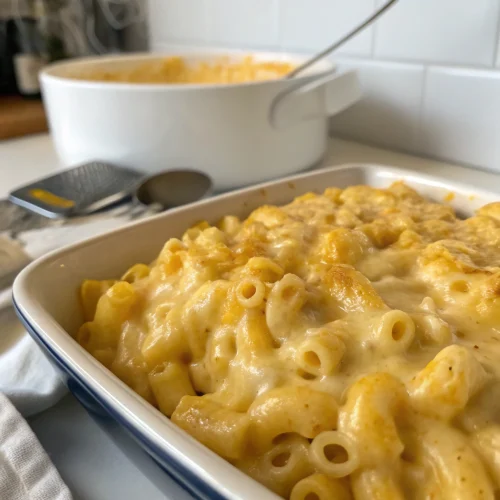
Homemade Mac and Cheese
Equipment
- 9x13-inch Baking Dish
- Large Pot
- Large Saucepan
- Whisk
- Cheese grater
Ingredients
Pasta and Sauce
- 1 pound elbow macaroni or cavatappi pasta 16 oz
- 4 tablespoons unsalted butter
- 1/4 cup all-purpose flour
- 3 cups whole milk 2% milk works but reduces creaminess
- 1/2 teaspoon mustard powder
- 1/4 teaspoon cayenne pepper optional for subtle heat
- 1/2 teaspoon garlic powder
- 1 teaspoon salt plus more to taste
- 1/4 teaspoon freshly ground black pepper
Cheese Blend
- 3 cups sharp cheddar cheese freshly grated
- 1 cup Gruyère or Monterey Jack cheese freshly grated
- 1/2 cup Parmesan cheese freshly grated
Topping
- 1 cup panko breadcrumbs
- 2 tablespoons butter melted
- 2 tablespoons fresh parsley chopped, for garnish
Instructions
- Preheat your oven to 375°F (190°C). Lightly grease a 9x13 inch baking dish. Freshly grate all cheeses and set aside.
- Bring a large pot of water to a rolling boil. Add 1 tablespoon of salt. Cook pasta for 2 minutes less than the package instructions indicate – about 6 minutes for most elbow macaroni. Drain but do not rinse.
- While pasta cooks, melt 4 tablespoons butter in a large saucepan over medium heat. Once melted and bubbling subsides, add flour and whisk continuously for 1-2 minutes until the mixture turns light golden and smells slightly nutty.
- Gradually add milk to the roux, whisking constantly to prevent lumps. Pour slowly, about 1/2 cup at a time, fully incorporating each addition before adding more. Bring to a gentle simmer and cook for 3-4 minutes until the sauce thickens enough to coat the back of a spoon.
- Add mustard powder, cayenne (if using), garlic powder, salt, and pepper.
- Remove saucepan from heat. Add grated cheeses in three batches, stirring until completely melted before adding the next batch.
- Fold the cooked pasta into the cheese sauce, ensuring every piece is thoroughly coated. Transfer to the prepared baking dish.
- In a small bowl, mix panko breadcrumbs with the 2 tablespoons of melted butter. Sprinkle this mixture evenly over the mac and cheese in the baking dish.
- Bake uncovered for 25-30 minutes, until the edges are bubbling and the top is golden brown.
- Allow to rest for 5-10 minutes before serving. Garnish with fresh parsley just before serving.


